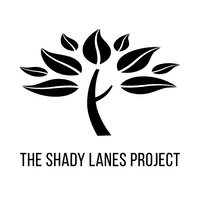A Bush Block Verge - A Work in Progress
I belong to the Pullen Pullen Catchments Group and have a great interest in natural bush regeneration where plants are not planted and the bush gradually regenerates itself (Bradley Method of Bush regeneration).
We live on acreage in western Brisbane where the bush has regenerated itself (very little planted) over the last 25 years. Proud to say that I do not have any need for a mower or whipper snipper. There is also virtually no weed on our land and I would only spend at the most 2 hrs per month on maintenance. Basically, my bush block has “kicked me out” and is self-sufficient, the wildlife is amazing and the whole eco system is in balance.
Wallabies travel up our driveway and reside in our very local area (we live in a cul-de-sac). The busy MT Crosby Rd is not too far away and road kill does occur. I was keen to increase the food source in the area for them, further reducing the need for them to travel far for food. Our block is too shady for many local native grasses to grow, however the nature strip, facing NW is ideal.
So it was great to see the BCC have a change of heart and allow residents to utilize the nature strip outside of their property.
Plantings list to date is shown below, with many tasty food for wallaby included.
- Arundinella nepalensis (reed grass) Poaceae family
- Capillipedium spicigerum (spicytop), Poaceae family
- Cymbopogon refractus (barbed wire grass) Poaceae family
- Imperata cylindrical (blady grass) Poaceae family
- Lomandra confertifolia (Echidna grass) Asparagaceae
- Microlaena stipoides (weeping grass) Poaceae family
- Poa labillardierei (tussock- grass) Poaceae family
- Chloris ventricosa (plump/tall windmill grass) Poaceae family
- Cyperus gracilis
- Cullen tenax (Emu foot- legume herb)
- Vittadinia sulcata (Furrowed Daisy)
- Enchylaena tomentose (Ruby Saltbush)
Being a bush block environment, there is no footpath on nature strips in the area, just weed/grass. So this was very much a positive for me as it allowed me to determine where the 1.2m “pathway space” (required and following BCC guidelines) could be.
The local naturally occurring grass species Cyperus gracilis has been selected to form the entire pathway (22m long), it is a low growing, readily spreads and can very easily be kept short. See: plantnet.rbgsyd.nsw.gov.au: Cyperus~gracilis
The basic design of the verge garden is to have two mulched areas running parallel to the kerb across the full width of the property. These two mulched strips are separated by the 1.2 pathway of the grass Cyperus gracilis.
This 22m X 1.2m pathway area will take time to be covered with this grass, so in the interim I decided to use very fine mulch. I simply made this by sieving some of my mulch pile through a 10mm sq mesh sieve. At the moment the pathway is a mix of Cyperus gracilis and very fine mulch.
The area between the “pathway” and the kerb is/will be planted with low growing, prostrate species. The area between the “pathway” and our front boundary (wildlife friendly) fence has all the tussock grasses planted. I continually disperse the seed as they develop, from the planted grasses. This is having a very good outcome already, with plenty of new native grasses emerging.
The neighbours and postie are “onside” and all is progressing very well to date.
Kookaburras sit on our front fence, seeking out the lizards that have taken up residence in the tussock grasses. One neighbour has also “asked me to do his”.

